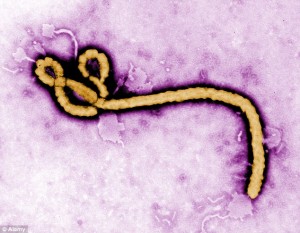
The authoritative news is that we are safe from outside attacks because we have a good system. But, like our military that always seems to be fighting the last war, our authorities seem to be ignoring the abilities our pathogens have to adapt.
We are told, for example, that ebola is not transmitted from a person who is not having any symptoms. While the outbreak in Nigeria last year is evidence in favor of this, the Reston strain of ebola is shed by asymptomatic pigs and there are many animal carriers for this illness that are not sick, which may help explain it’s uncontrolled spread in west Africa. The fact that the Reston strain is not known to cause human disease is not much consolation.
For those familiar with Paul Ewald and The Evolution of Infectious Disease it is obvious that something has happened to this virus. Historically the death rate has been 70-90%, but now it is 50-70%. The only means we have of containing this epidemic is by strict isolation, and Ewald shows how that method pushes the organism to adapt in friendlier ways–by killing less of us. So the unasked question is: What else happened in this mutation?
And that is not all. Researchers have also shown that the response to ebola in mice models varies within strains in the laboratory. Mice usually do not show symptoms of ebola, but when a variety of mice are used, what is called the Collaborative Cross, the whole range of responses was seen, from hemorrhagic fever and death, to no symptoms at all.
The bottom line here is that there is a lot we don’t know, but need to know about our interaction with this virus. In the meantime greater emphasis on isolation is effective at both containing it and pushing it toward even more friendly mutation. Ewald uses the example of cholera. It too had a very high mortality rate until we focused on isolating it by cleaning up the water supplies. Then it mutated to the El Tor strain which doesn’t have nearly the lethality seen with earlier epidemic cholera. We should be able to do the same thing with ebola.
Since our defenses seem to play a role as well it would be a good thing to keep them all optimal as well. When optimal they operate in the same way that Ewald describes for isolation; they push the invading organisms toward friendly adaptations. We have described how to do this elsewhere.
